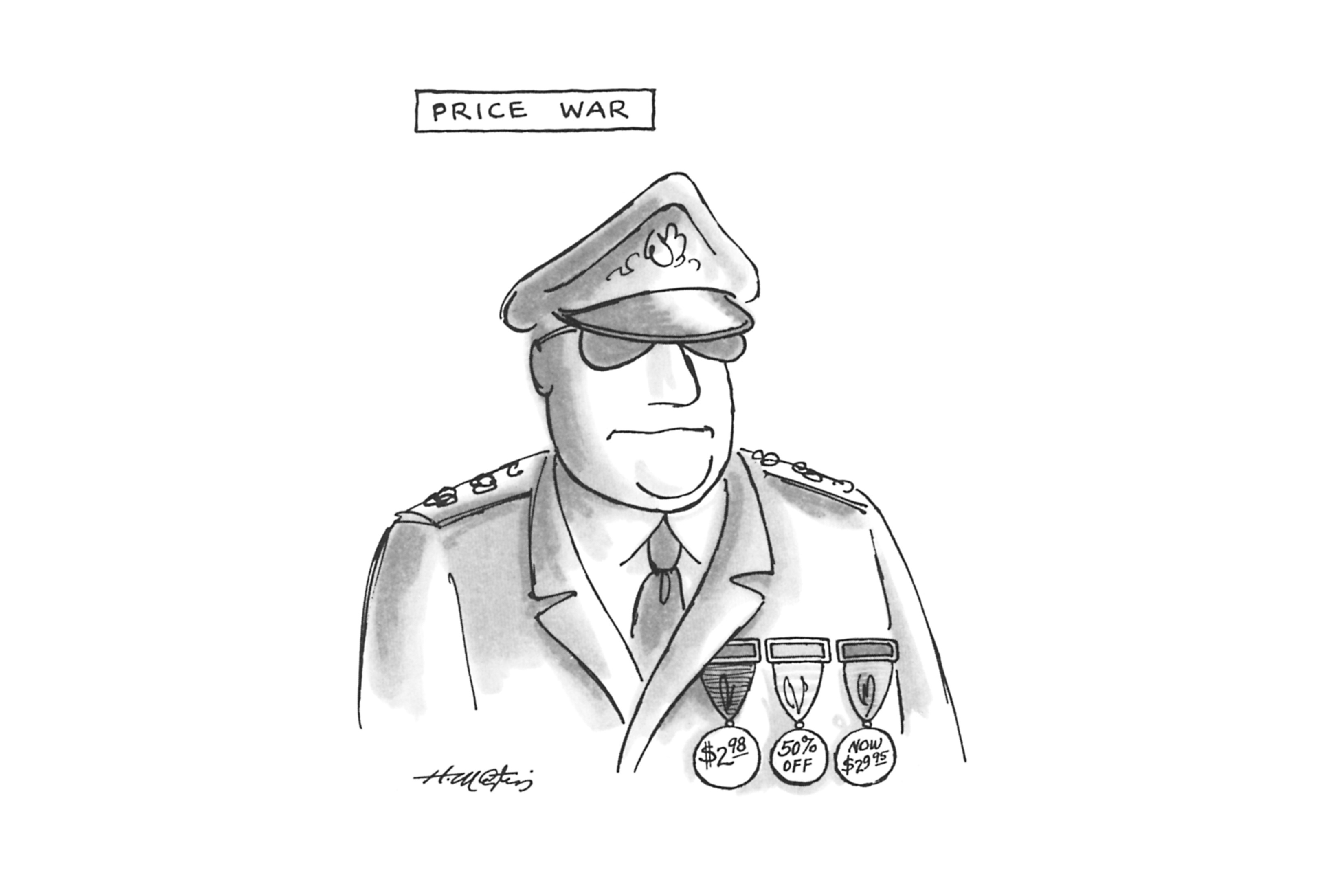Creative Agencies: Winning the Battle but Losing the War

Creative agencies have mastered the requirements of integrated campaigns, from TV to online video, ad banners, email marketing, Facebook, Instagram, and websites. This creative accomplishment is especially noteworthy given the huge volumes of work involved (the typical creative has to generate as many as 300 pieces of work per year). It's a pity, then, that this victory is being undermined by price-cutting strategies that leave agencies understaffed and underpaid. Senior executives need to create winning business practices; they're currently losing the business war.
General George Patton said it best: "If everyone is thinking alike, then somebody isn't thinking. Better to fight for something than live for nothing."
What's worth fighting for these days?
If creative agencies really believed in the quality of their creative work and its positive effect on client brands, then they'd fight for premium prices, which would mean higher billing rates for their people. After all, this is what the consulting firms have been doing for more than four decades: paying their people exceptionally well and marking them up 5X for their billing rates.
For entry-level consultants, salaries are about $83,500, on average, at top-tier firms. Performance bonuses are about $15,775, on average, with a $5,000 signing bonus. If we ignore the signing bonus, this adds up to $99,275 in new-hire remuneration. At a 5x billing multiple, the entry-level consultant is being billed out at $275 per hour (at 1,800 hours per year).
Salaries for entry-level MBA consultants (and consultants with a few years' experience) earn about $149,000, on average at top-tier firms. These consultants can earn a performance bonus of about $37,000, on average. At a 5x billing multiple, the entry-level MBA consultant is being billed out at $516 per hour.
Compare this to the current billing rates being paid to creative agencies today — from $115 to $150 per hour, on average, in my experience. I've seen average billing rates as high as $250 per hour, but it's rare. A billing rate of $115 per hour supports an average salary of only $88,000–$94,000 per year. $150 per hour? Only $115,000–$123,000. $250 per hour? $191,000–$205,000. These are average salaries — hardly the levels that support first-rate organizations that are solving complicated creative and marketing problems.
Creative agencies are underpaid, and this has an inevitable and negative effect on long-term creative quality.
Despite this, great strides are being made by creative departments in being able to handle highly diverse scopes of work across all media disciplines — and to retain strong, positive beliefs that their work is adding value in ways that they are proud of. I've surveyed agencies many times and, although they are discouraged by their high-stress working conditions, they continue to feel positively about their clients and the value of the work they are doing for them.
These creative accomplishments are being undermined by the defeatist attitudes of those agency executives who negotiate fee arrangements for either new business or current clients.
"Fear of losing the client/prospect" is their dominant attitude, and it leads to a succession of compromises that will only lead to defeat.
How can senior agency leaders turn this around?
First, they must commit to negotiate scopes of work, headcounts, and fees from a position of strength rather than weakness. They must know how much work they are being asked to do (this is rare today) and how many agency FTEs it will take to do the work. These basic disciplines are lacking at most agencies.
Second, they must refuse to negotiate rates on the basis of salaries, overhead rates, and profit margins. Yes, I know that this is what procurement asks for, but agencies can satisfy this demand by putting forward billing rates in lieu of salaries and profit margins. Clients are not buying agency salaries, paying for overhead, or underwriting profit margins. They are buying the time of talented individuals, and this time has a price: hourly billing rates. Why should agencies cave in on this basic principle?
Third, agencies must seek, as a matter of principle, premium billing rates for their people, just as Apple, American Express, Nestlé, P&G, and other major advertisers seek premium prices for their products. Why has the principle of premium pricing for premium talent been abandoned? Out of fear, rather than conviction? Out of carelessness? Out of weakness?
If agencies do not really believe that they are adding much value through their creative efforts, then they are right to accept today's commodity billing rates.
What's unacceptable, I think, is the belief in the inherent quality of their creative efforts and their fear-based acceptance of commodity prices. Agencies caught in this trap need to change their leaders.
In business, as in war, fear can only lead to defeat.
Photo credit: Henry Martin, The New Yorker, The Cartoon Bank. With permission
Don't stop now! Stay in the know with critical commentary on the advertising industry from Michael Farmer.
Click the social buttons to share this story with colleagues and friends.
The opinions expressed here are the author's views and do not necessarily represent the views of MediaVillage.com/MyersBizNet.


